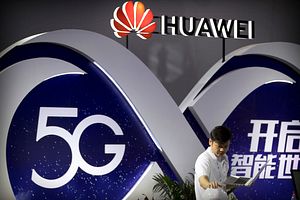This week, the Philippines moved forward with what effectively would constitute the rollout of Southeast Asia’s first 5G broadband service with Huawei’s involvement. The development put the spotlight on Southeast Asia as a key subregional battleground for the evolution of 5G technology and major power competition in that domain.
As I have observed before in these pages, Southeast Asia is among the subregional battlegrounds within the Indo-Pacific where the 5G race will play out. The subregion collectively makes up the world’s third largest population and the fifth largest economy and serves as a key outlet for China to project its power in the region more broadly. IHuawei has already long had presence in some Southeast Asian states and plans have already been in the works on several projects, including on 5G more specifically, due to the advantages the firm has enjoyed relative to its competitors.
Despite some caricatures that have been presented about Southeast Asia’s approach toward Huawei amid rising U.S. security concerns about the company, there have in fact thus far been a range of different responses within the region to date, which is not surprising given variances seen among countries in everything from overall development levels to technological progress. While some countries like Cambodia have been more eager to pursue collaboration, with an indication of this being Prime Minister Hun Sen’s signing of a memorandum of understanding on 5G cooperation on the sidelines of the Second Belt and Road Forum (BRF), others, like Vietnam, have been wary, and still others, such as Thailand and Indonesia, are still in the process of testing out how to balance the opportunities and challenges in options they may eventually pursue. And even though some governments and companies may be incentivized to weigh opportunities more heavily than challenges, in several Southeast Asian states, concerns have surfaced among some institutions, individuals, and the public on this score as well.
Last week, Southeast Asia’s response to Huawei was in the spotlight again with what effectively constituted the rollout of Southeast Asia’s first 5G broadband service. Globe Telecom Inc of the Philippines, which as a country is one of U.S. treaty allies in Southeast Asia, effectively launched the region’s first 5G service, with the firm acknowledging that Huawei would provide the equipment. Globe’s chief commercial officer, Alberto de Larrazabal, told journalists that the firm would look to use Huawei’s equipment, such as radios and modems, to deliver 5G quality broadband internet to tens of thousands of homes and offices in key urban centers, according to Reuters.
The development came as no surprise. Huawei has had a presence in the Philippines for years, and telecom companies such as Globe have repeatedly expressed their desire to continue on with existing collaboration, including work on 5G under previously concluded agreements. And despite concerns that have been publicly and privately conveyed by U.S. officials as well as issues that have been flagged within the Philippines, the Philippine government under President Rodrigo Duterte, which has pursued a more cooperative relationship with China in spite of the growing challenges inherent in doing so, has simply dismissed fears of security risks, rather than considering other options including undertaking an independent review as has been the case in some other countries.
That said, it is difficult to evaluate the exact significance of this development given that it is still early days and details still remain unclear. There have been few specifics to date about how the project will proceed or how Globe has been working to manage security concerns, other than Larrazabal’s vague statement that Globe had hired independent firms to ensure that privacy and security issues were addressed. We also still have little sense for how this plan will advance and how it will affect the broader conversation within the Philippines about Huawei, including the reaction from other companies, the government, and other opponents and skeptics. A Department of Information and Communications Technology statement issued back in May made reference to the fact that local telecommunications companies had said they would diversify their procurement of equipment to make their networks more robust and secure, and that the agency would continue to maintain standards with respect to cybersecurity auditing, including potentially revoking the license of firms to operate if need be.
Nonetheless, the development will no doubt add to fears that Southeast Asia is quickly becoming a front for Huawei to make continued inroads in spite of any challenges it may face due to restrictions or bans from other countries including the United States. In this context, it is worth noting that news of Globe’s advances came just as reports surfaced, initially in the Khmer Times, that Huawei intended to move forward on a plan to deploy an undersea fiber-optic communications cable connecting Cambodia’s Sihanoukville city and Hong Kong, which marks just the latest in a series of security concerns about Phnom Penh’s relationship with Beijing. While Southeast Asian responses to Huawei are far from uniform and the subregion’s outlook is far from decided, these individual manifestations nonetheless suggest that the pace of things is beginning to pick up.

































